The Evolution of Drag
From Divine to Divine Trash, drag culture challenges gender politics.
Friday, March 24 marked the debut of the ninth season of RuPaul’s Drag Race. Since 2009, RuPaul has introduced middle America to more than 100 iconic performers – including Milwaukee’s own Trixie Mattel and Jaymes Mansfield – and created a national obsession with drag culture.
How often have you heard “yas queen,” “bye Felicia,” “sashay away” and “huntee” from the most unlikely people? Could it be because they’re hearing those terms for the first time on Drag Race? The Drag Race brand is so strong that performers can look forward to star booking long after their season is over. America, it seems, has gone wild for drag: drag brunches, drag bachelorette parties, drag bingo, drag fundraisers, even drag storytime for children. It’s not uncommon to see grandmothers, children, even babies in the audience at a Hamburger Mary’s performance – something that might not have been common just eight years ago.
Looking back at cast, set and performance photographs in the History of Gay Milwaukee Facebook group, it’s truly astonishing how world-class those shows really were. My very first visit to a gay bar (at age 16) was to see my friend, Vanessa Alexander, perform in Holly Brown’s Saturday night show
George Prentice, one of the original owners of La Cage, told me in 2009 that the show lounge was a key reason for the club’s success. Straight people, who might not normally want to be seen in a gay bar, started coming for the shows and stayed for the dancing. Today, the tradition continues at La Cage in the second floor Montage Lounge.
Today’s drag performers are a totally different breed than their spiritual ancestors. While there are many reasons for that, one historically famous drag queen broke all the rules.
I Am Divine
“Drag queens were so square back in my day,” filmmaker John Waters told me in a November interview. “They wanted to be real women, Miss America, maybe their mother? They took things so seriously that they couldn’t even laugh at themselves. Divine changed all of that. Divine didn’t want to be a woman. He wanted to be Godzilla!”
Divine, born Harris Glenn Milstead, burst on the Baltimore counterculture scene in the mid-1960s and became an infamous superstar. Starring in midnight movies like Female Trouble, Pink Flamingos, Mondo Trasho and Multiple Maniacs, Divine achieved fame, fortune and a national cult following as “the filthiest person alive.” Even filmgoers unfamiliar with John Waters’ earlier works still remember Divine from his famous performance in Hairspray (1988.)
Divine always considered himself male, not transgender or transsexual, and used male pronouns. “My favorite part of drag is getting out of it,” said Divine. “Drag is my work clothes. I only put it on when someone pays me to.”
On February 18, 1988, Divine made a memorable midnight appearance at Milwaukee’s Club 219. Three weeks later, he died in Los Angeles while filming his network TV debut on “Married With Children.”
After his passing, Divine was described as the “Drag Queen of the Century” by People magazine. No one would dare challenge the title – but innumerable people would be touched and inspired by Divine’s legacy. Including someone special right here in Milwaukee.
Meet Divine Trash
Annaleigh Vytlacil was just 12 years old when she first discovered Divine. After renting Hairspray from her local Hollywood Video, she became hooked on her character, music and filmography. As a natural performer, she joined the Rocky Horror Picture Show shadow cast at the Oriental Theatre, where she now directs and performs as Dr. Frank-N-Furter. While dressed as Babs Johnson from Pink Flamingos for a special Movie Villains show, she received overwhelming applause for her resemblance to Divine.
Today, Annaleigh performs as Divine Trash: A Divine Impersonator, a character she has brought to The Local/Club Anything, Hot Water Wherehouse, Hamburger Mary’s, This Is It, The Cactus Club, the Milwaukee LGBT Film & Video Festival and the Riverwest Public House. Last year, she co-hosted the PrideFest Milwaukee Mainstage, and performed at the Milwaukee LGBT Community Center’s annual benefit.
While Annaleigh’s star is rising, she often faces criticism, skepticism and even exclusion within the drag community for being a “bio queen” (i.e., a biological female.) She’s been denied the opportunity to perform at certain events and venues, simply because of her gender. She’s been told that women doing drag is not real drag. She’s even been told that her performances invalidate the art form.
“Honey, it’s all drag, that’s all I can say,” said Miss B.J. Daniels, a leading Milwaukee drag diva whose career spans three decades. “If you’re a good performer, no one cares what’s under the costume. Anyone with a desire to perform should do what they think is right. Art is in the eye of the audience.”
If drag performances are based on gender illusion, should the performer’s actual gender even matter? I had the opportunity to meet with Annaleigh and learn more about the gender politics of drag in 2017 while asking her some questions:
What inspired you to become a Divine impersonator?
After the Movie Villains show, I decided I would study Divine and take an impersonation to the stage. All of my costumes, makeup looks and hairstyles are direct copies of what he wore. This includes the dance movements, the walk, and the facial expressions. It takes a lot more time and effort than people realize.
The aim for me is to pay tribute to a man I admire dearly, but also to educate the audiences on how important and influential Divine is to the drag community. Anyone who loves drag and wants to do drag needs to know who Divine is.
What’s been your proudest moment as a performer?
I take pride in the continuous support of those who actually knew Divine personally. I met John Waters a few years ago and he stated that I was one of the best Divines he’s ever seen. I’m in close touch with the people who run Divine’s estate, Divine Official Enterprises LLC. The amount of support and love I have received from them is the greatest gift of all.
As long as you are coming out, entertaining the masses while looking sickening, why should it matter what gender you are? It is no one’s business what you may or may not be packing or tucking.
Drag has always been about gender bending. But, the art of drag is forever evolving. The traditional meaning of “drag queen” means female impersonator, and vice versa for “drag king.” But, isn’t it still gender bending to be a woman, doing an art usually done by a man who’s impersonating a woman?
Gender will forever be an issue with humans not willing to educate themselves or mind their own business. In a way, people aren’t willing to open up their own art to evolution. It’s a fear of change. But, your art won’t grow if you box it up.
One of the best education sessions would be to book more queer performers, including club kids, drag kings, non-binary performers, and of course, females doing queen. The more we are seen and appreciated, the more respect we will receive.
How do you respond to people who define drag as “dressed realistically as a girl?”
Some drag queens stick to that definition and there is nothing wrong with that. However, it doesn’t need to be the rule.
Look at our very own Trixie Mattel. She’s a life-sized Barbie that tries her hardest to look like an “exaggeration of a drag queen.” She has a brand that is not built on looking anything like a woman, or a human for that matter.
To me, if you perform a male character, you’re a king. If you perform a female character, you’re a queen. If you perform with no gender, you’re still royalty.
What discrimination have you witnessed or experienced personally?
There’s a lot of talk on social media about how women doing queen drag is not legitimate drag.
I’ve also seen drag kings belittled and called “lazy” or “boring.” Kings have always been treated as less, and that’s shown in booking fees and lack of bookings in gay bars. The same is not always true with male kings, who perform as male, and are often treated with more respect.
I’ve also heard some very transphobic remarks. Our trans brothers and sisters are an extremely important and vital part of the drag community. The world of drag would not exist or have advanced this far without them.
People tend to think they are the authority on what drag is, when in truth, none of us truly are the authority. Respect people and their art. It’s as simple as that.
Drag developed as an extremely feminist art of the exaggeration of a woman. Sadly, it’s become very misogynistic. This has only pushed me to use my platform to educate even more.
What can you tell me about your upcoming show “FEMME DIX?”
FEMME DIX is a show being presented at DIX Milwaukee on Saturday, April 15. It will consist of all queer female entertainers performing their drag queen personas.
A show like this has never been done in the Milwaukee drag scene. I’m so happy that the management at DIX Milwaukee is joining the movement. By celebrating different variations of queer performance art, we can let every voice be heard!
Out Look
-
The Enduring Legacy of Eldon Murray
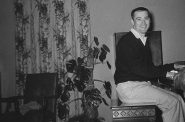 Aug 1st, 2019 by Michail Takach
Aug 1st, 2019 by Michail Takach
-
The Flag Stands for LGBTQ People, Too
 Jul 4th, 2019 by Michail Takach
Jul 4th, 2019 by Michail Takach
-
The Battle for Juneau Park
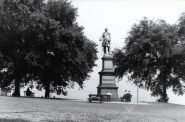 Apr 14th, 2017 by Michail Takach
Apr 14th, 2017 by Michail Takach


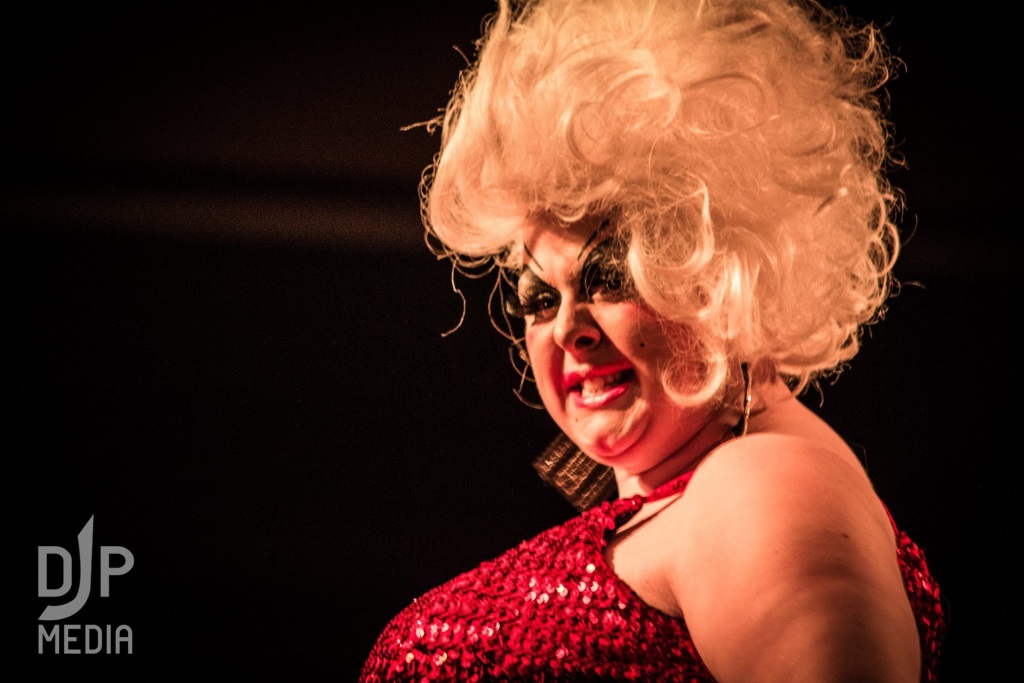
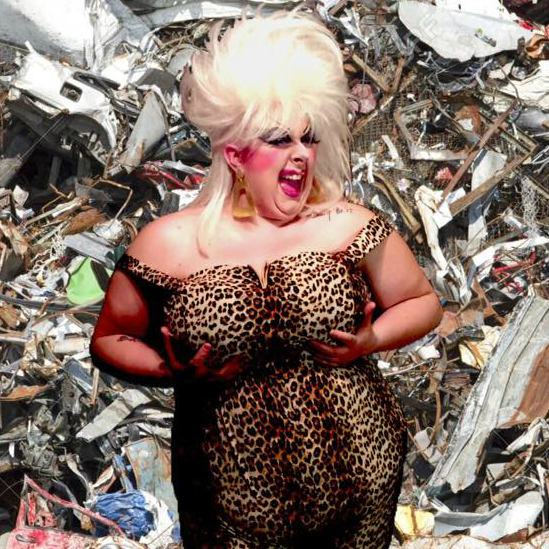
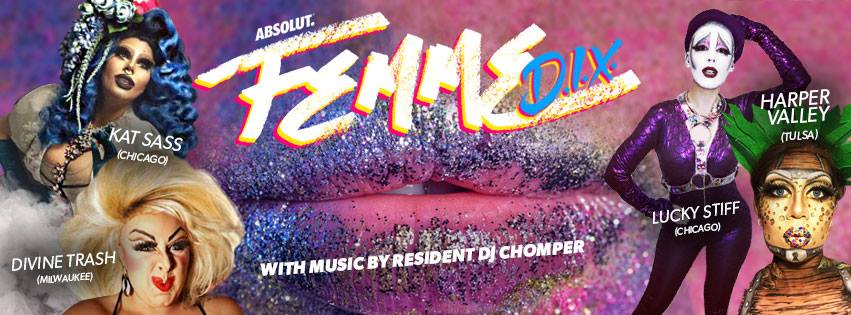















Thanks for this article! I used to go out dancing with all of my friends (straight and gay) years ago and one year met Divine in a small club called Circus Circus on the South Side – anyone remember this place? He gave a stand-up comedy act dressed in his inimitable way in the middle of the dance floor on a slightly raised dais and I was only about three feet away from him (since you had to stand to see his act). He exuded enormous amounts of energy, everyone laughed like crazy, and he was sweating profusely at the end of his set. What a great comedian!